Volatile Organic Compounds (VOCs) in paint
All our paints are labelled to show the Volatile Organic Compounds (VOC) level of the product.







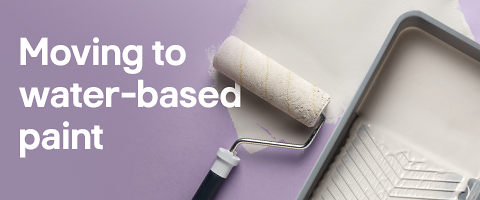
At B&Q, we want to help make it easier for everyone to create a healthier and more sustainable home. So we pioneered reducing the fumes from paint by introducing VOC (volatile organic compounds) labelling to our paint packaging.
Ever noticed that strong chemical smell when painting? It’s mainly caused by the volatile organic compounds (VOCs) found in the paint’s formula. This lingering smell is also the beginning of a process called “off-gassing”. Off-gassing is the process where the VOCs in a product are released into the air. With paint, off-gassing is at its highest at the application and drying stage but in paints with higher VOC content, like many solvent-based formulas, off-gassing can continue for up to 30 days.
As VOCs evaporate, they contribute to the formation of greenhouse gases, which have a significant impact on the environment.
Did you know?
There are over 10,000 chemical compounds that can be labelled as VOCs. Many are found in everyday items such as paint, cleaning products and air fresheners. In paint, they’re traditionally used to help the flow and application, however, water-based paints now feature the same benefits yet have a much lower or minimal amount of VOCs.
In a recent study, we found that only 13% of people are aware of the impact of VOCs paint on the environment, however, 66% consider whether paint is environmentally friendly before they buy.
We wanted to give you the lowdown on how to choose and how to use low-VOC paint, also known as water-based paint.
Here at B&Q, we’ve championed low-VOC paints by increasing our range. Last year low-VOC paints made up 88% of our range and 85% of our paint sales and we’re committed to increasing these figures over the coming years.
You may have noticed the different globe logos on paint tins? We created this simple labelling system to show the level of VOCs in paint and it’s since been adopted by many leading brands. In 2018, the BCF (British Coatings Federation) took legal ownership of the globe labelling system so that there was a unified icon to guide customers on how to make a more informed choice.
Water-based paints are often described as being ‘quick drying’ or ‘non-yellowing’, but the only way to really be sure that your paint is water-based and therefore low in VOCs is to check the label for that ‘low’ or ‘minimal’ VOC globe!
The benefits of low VOC (or water-based) paints
Less odour
You can use your room as soon as the paint is dry - without worrying about smells.
Brilliant finish
White water-based paint keeps trims and woodwork looking brighter and fresher for longer.
Quicker to use
It dries up to three times faster than solvent-based formulas, making recoating and cleaning quicker.
Kinder to the planet
Thanks to the low levels of VOCs, water-based paint is a smarter choice for the planet.
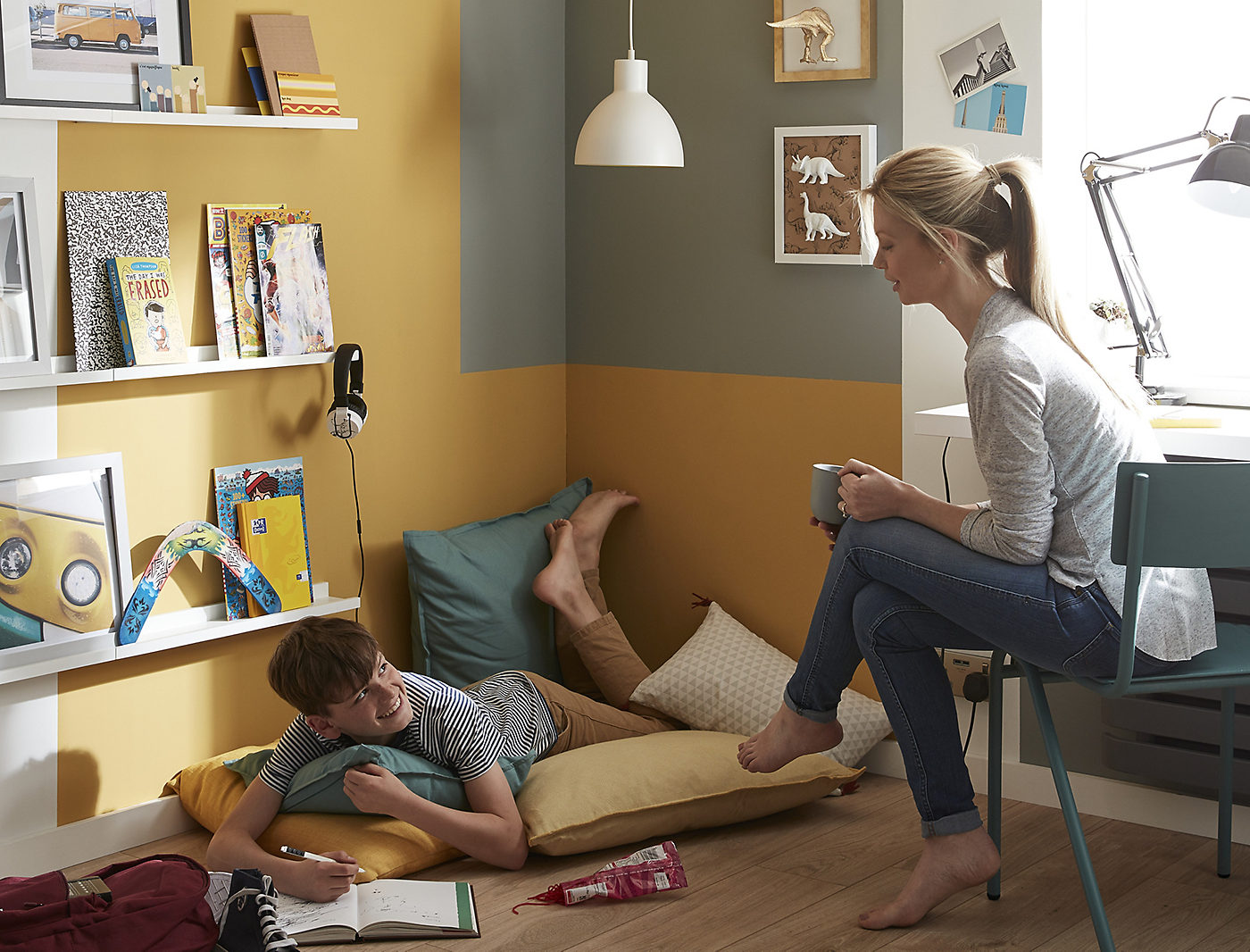
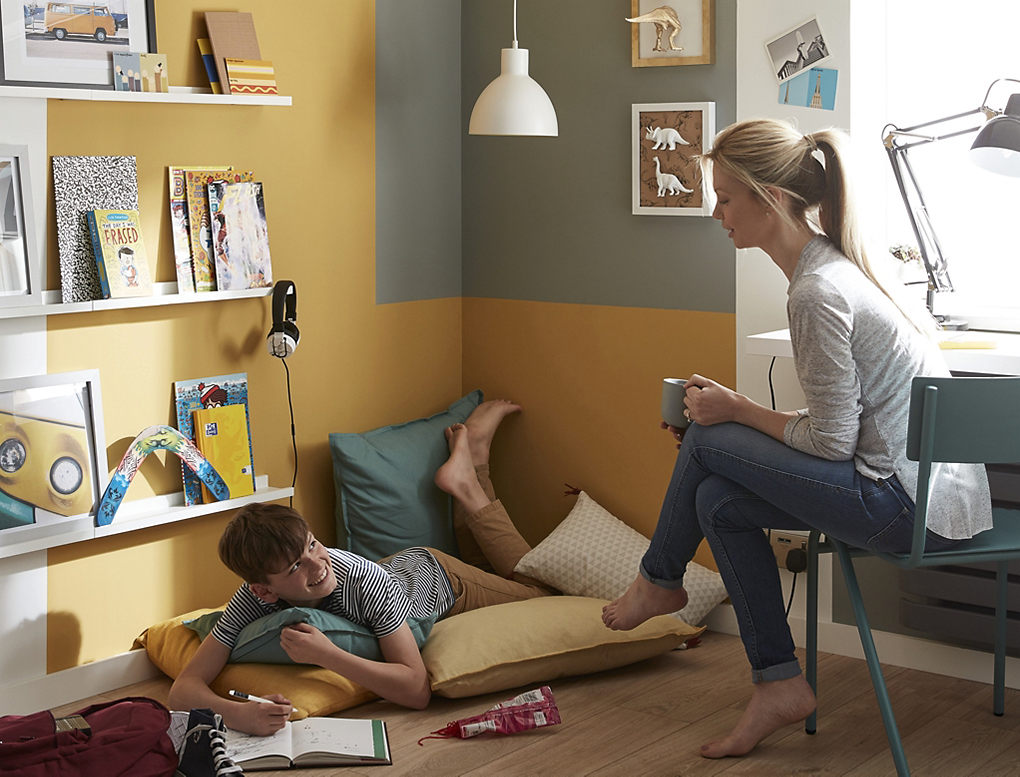
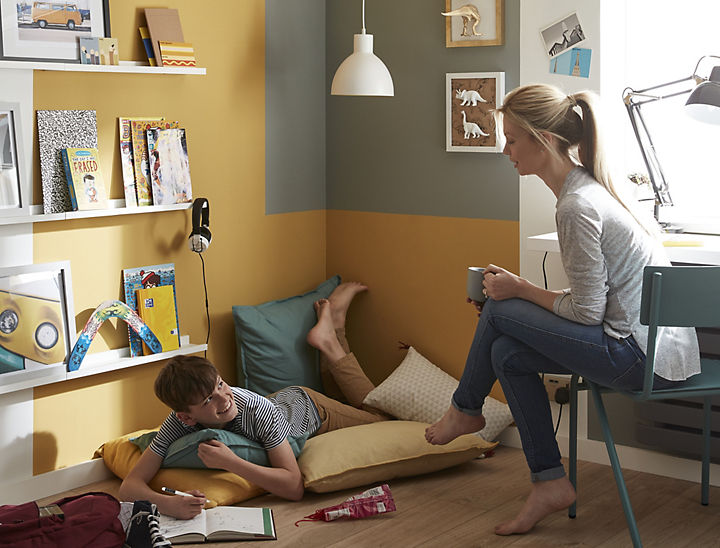
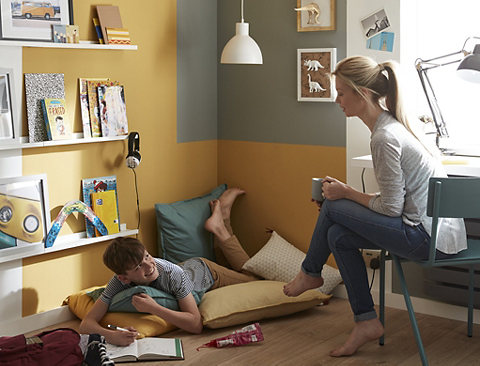
A guide to using water-based paint
We’ve partnered with our friends at AkzoNobel, makers of Dulux, to give you the ‘101’ on water-based paint and why it’s the best choice for your decorating project.
1. When choosing water-based paint, you want to look out for low or minimal VOCs. Our research shows that only 1 in 8 people has heard of low-VOC paint. Tins might feature some of the other benefits of low-VOC paint, like ‘water-based’, ‘quick-drying’, ‘non-yellowing’, ‘A+ interior emissions’ or the minimal/low VOC content globe.
2. hen making the switch from solvent to water-based paint for any trims, you’ll need to sand the existing shiny gloss finish first. Once you’ve applied the water-based paint, not only will surfaces look fresher for longer, they can be recoated in the future with ease.
3. We always recommend using the best tools you can find that suit your price range. By using water-based paint, you can keep tools squeaky clean, and they’ll last much longer too. It’s also a good reason to invest in a high-quality set of rollers and synthetic-haired brushes.
4. Just like paint technology, interior trends have moved on too. Swap super shiny trims with the brilliant long-lasting finish of water-based paints. There’s also water-based spray and outdoor paints including for surfaces like metal.
5. You can use water-based paint on fencing or exterior walls until the temperatures drop below 9 degrees centigrade. Like solvent paint, water-based formulas need the chance to completely dry before reaching their full potential.
6. One last thing? Enjoy the experience. Water-based paint is quick-drying, easy to clean and has a much less distinctive odour. It’s a big tick from us!
Don't forget, look for...
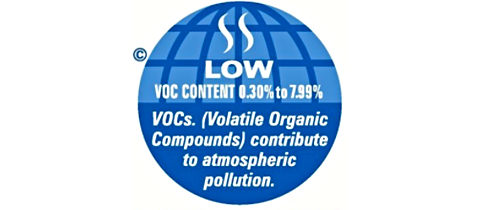
Low VOC content
Between 0.30 to 7.99%
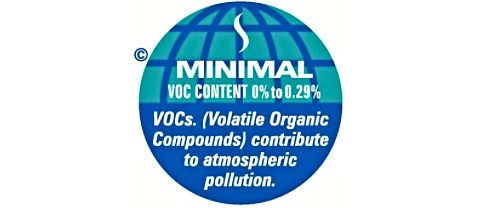
Minimal VOC content
Between 0% to 0.29%



